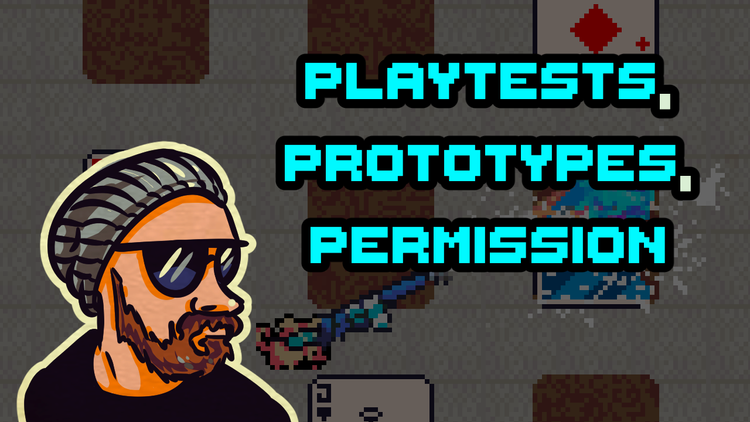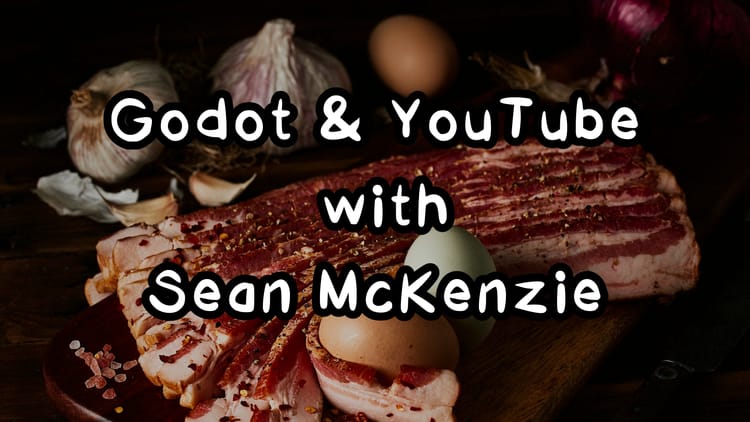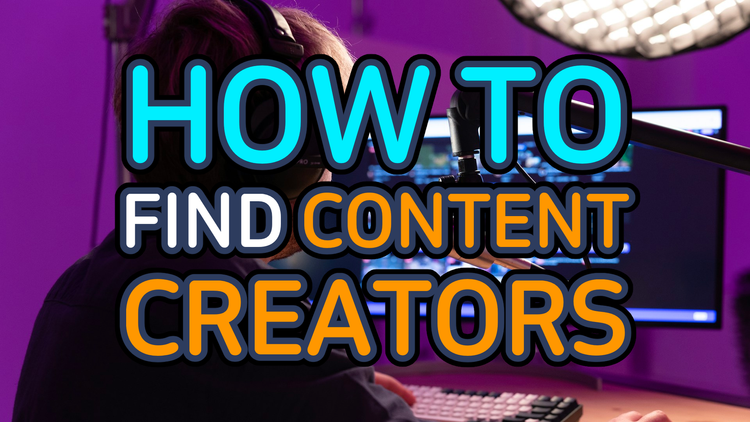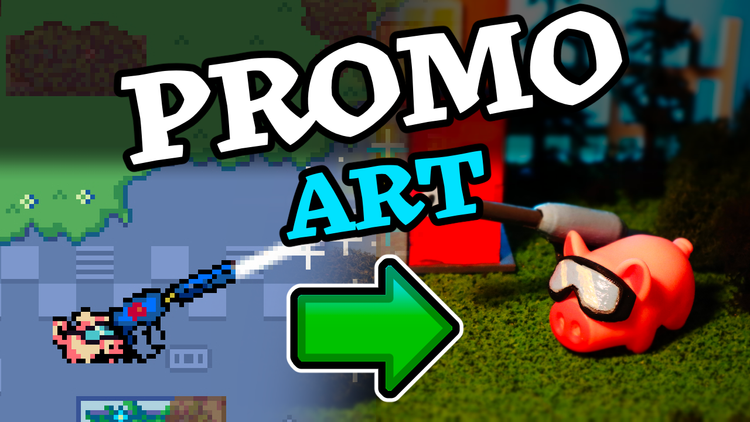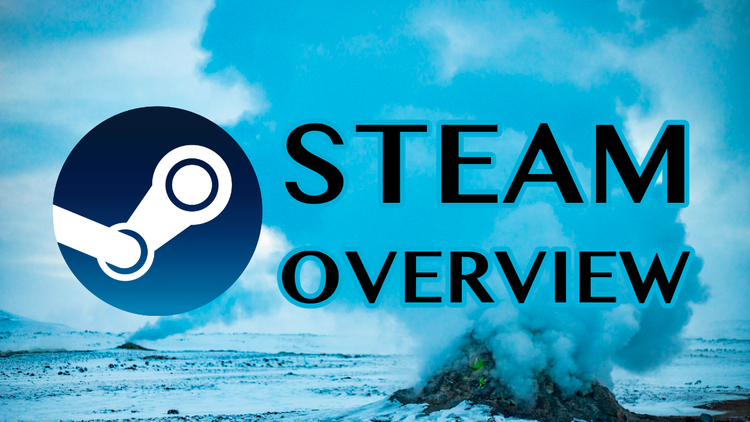🏔 Climbing content mountain
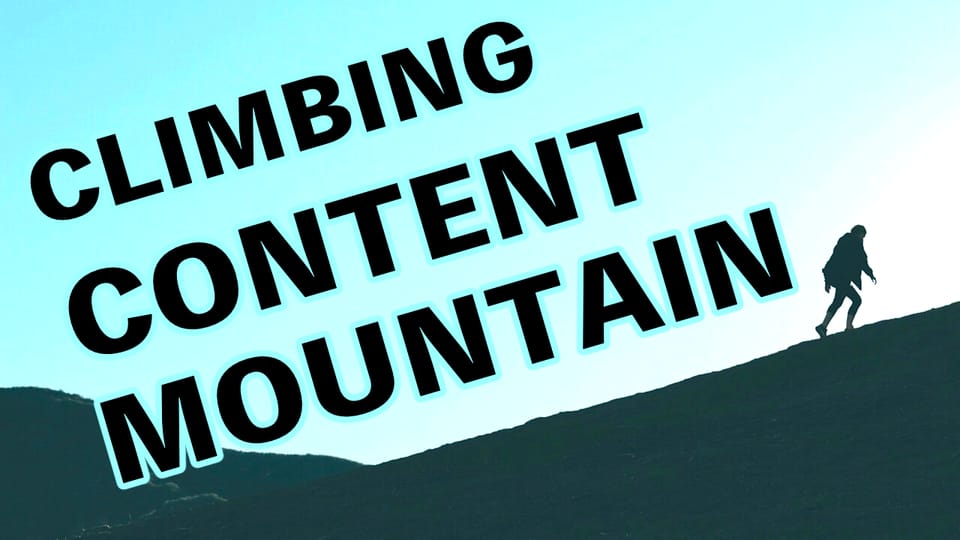
Every game developer knows about content mountain.
(Though, they may call it something else.)
Content mountain is the massive glut of data, levels, maps, sprites, concept art, narrative, polish, sound effects, marketing assets, music, animation, shaders, press kits, 2D/3D assets, and anything else that you could place under the umbrella of “things you gotta make” before you can ship your game.
It's a lot.
Content mountain is brutal and many of us have perished upon its treacherous heights. Here are ways that may help climb this perilous mountain:
- 🪄 Find your magic number
- 🎨 Rough it out
- 🍲 Mix ‘n match
- 🔥 Have a solid concept & desire to execute
🪄 Find your magic number
Content mountain is sort of a numbers game. You know you need content, but how much? How many levels feels like enough? How many monsters do you need? How many puzzles?
What’s big enough to feel big to you?
Make one chunk of your game to see what makes it feel like “enough” (whatever that means to you and some trusted friends/playtesters). That’s usually a good marker; you don’t always need to go much higher than that (and sometimes can get away with going lower).
A great place to start is with a low, "magic" number. Why not start with 3? Three is a lovely number, powering games like Rock, Paper, Scissors and creating just enough space for variety without so much that it feels overwhelming. Three gives us structure such as common, uncommon, and rare. Small, medium, large. Blood, sweat, and tears. You can’t go wrong with the number 3.
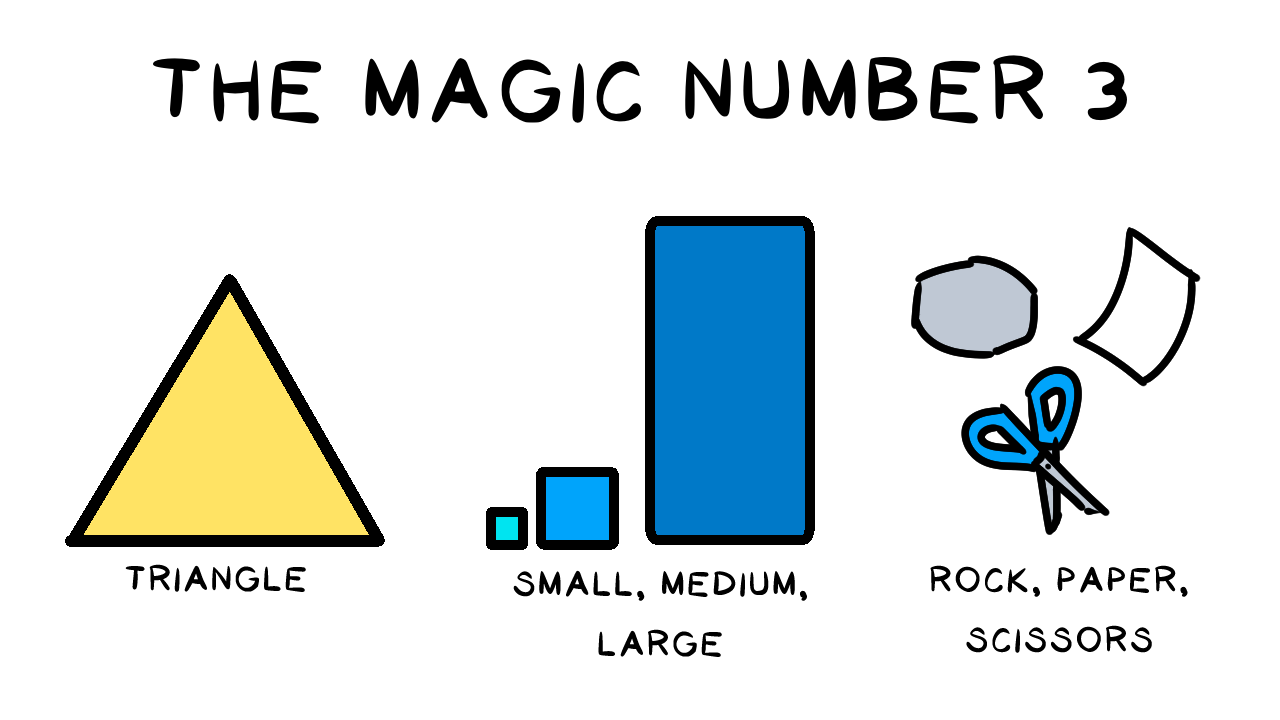
Below is a common structure for collections of 3. Your “thing” could be anything: a monster, a puzzle, a game mechanic, whatever’s relevant to your game:
- Show thing.
- Show thing again (player gets it now but is becoming bored).
- Show thing again but different this time (player understands now and is still interested).
From Making Big Indie Games.
Is three not enough? No problem! I’ve got a great number for you: 4.
Four powers the design of Spelunky: 4 life, 4 ropes, 4 bombs, 4 (main) levels. There are more than 4 monsters and traps in most zones, but 4 anchors the game and gives it structure.
How much stuff do you need? Only you can answer that, but when in doubt, consider The Magical Number Seven, Plus or Minus Two. Go with an amount that humans are used to keeping in their short-term memory, such as 7-digit phone numbers. When you have that many levels, puzzles, monsters, or items, you’re well on your way to making a big game.
🎨 Rough it out
Content mountain sure is high, isn’t it? It’s also steep. When you’re at the bottom, gazing up towards its towering heights … maybe we should just go play some games, eh?
Try to imagine all the content you need to build as a blank sheet of paper that you want to fill with a drawing. A great place to start is by lightly laying down broad strokes, rendering shapes such as circles and rectangles. Draw lightly and try to feel out the structure of what you're building.
You can do this same thing when laying down content in your big game. Say you think you need 5 levels: so lay down a rough sketch of what they would each look like, and tie them together. Add one “thing” to each “chunk” of your game.
… but keep it polished, my friends. Remember to keep your game playable and every piece of content as polished as the rest of the game.
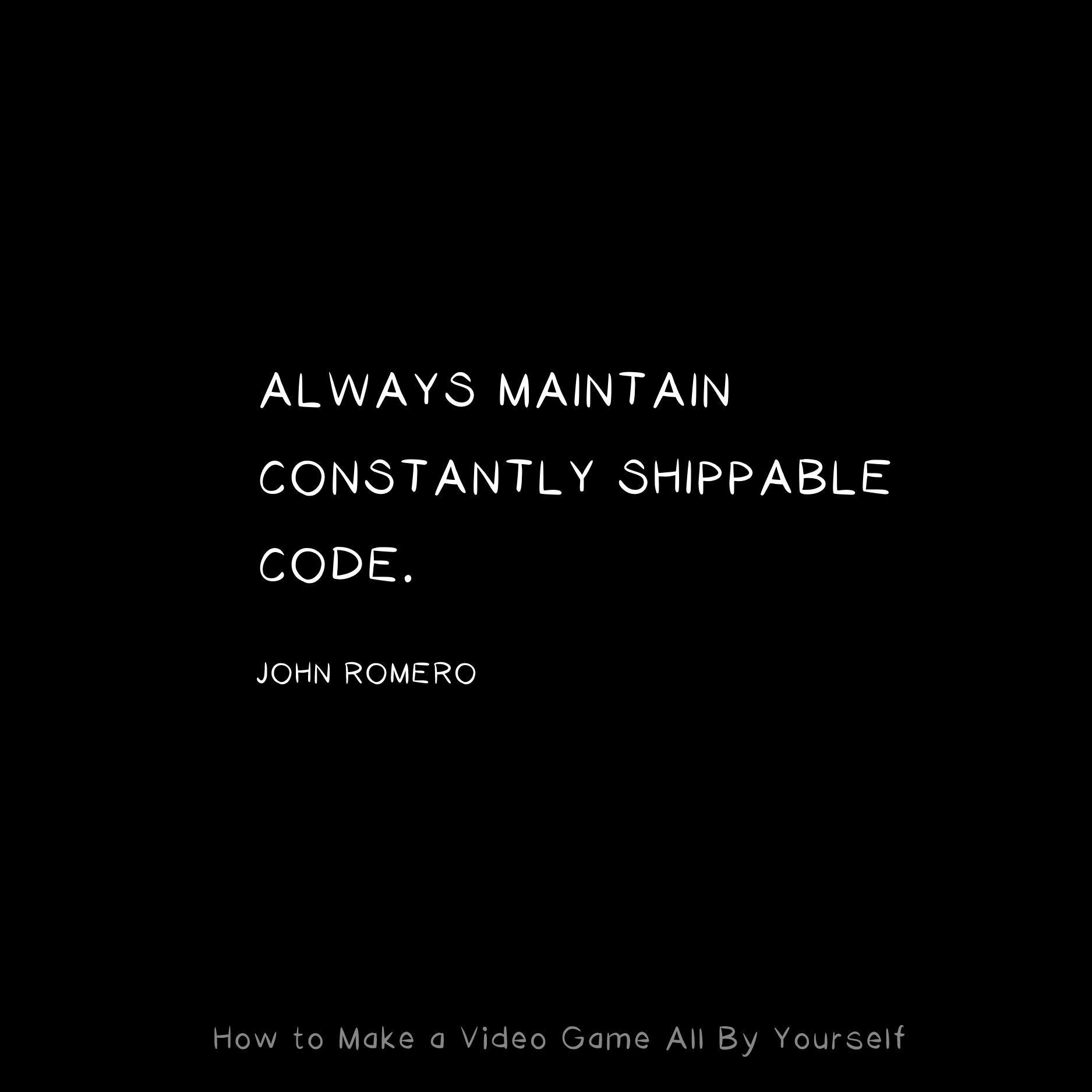
If you’re not sure where to start, build the easiest obstacle imaginable. In an overhead action game, that might be a trap that springs after a long, obvious delay. Then consider the most difficult obstacle imaginable. That could be a monster that shoots a projectile so fast it hits you instantly. When you’ve got your “easiest” example and your “hardest” example, you’ve got the perfect range with which to build out scaled content.
Try to get a feel for how often you need to introduce new content for your player to remain interested. Maybe it’s every level, or every 3 minutes, or after each challenge is completed. Knowing this gives you a better feel for how much content your game needs.
🍲️ Mix ‘n match
What if your monsters could hold any item? Say you have 3 monsters and 3 weapons. That’s not much content, but if your monsters can hold the weapons, suddenly you have many options where you can mix ‘n match your content to make it feel fresh again.
Or what if any level could have rain, wind, earthquakes, or other traits that could lay atop any environment? New environments are often expensive to create, so maybe you can get away with fewer environments, so long as there are ways to add variety to them. One level might focus on spikes, and another might focus on wind. Together, you could have a level that has wind that pushes players into spikes. Brutal! And no new features necessary.
Some smart decisions about your content can give you the ability to change one or two properties and get an entirely new experience. Try to create the “stuff” in your game so that it could potentially fit together, like building blocks or puzzle pieces.
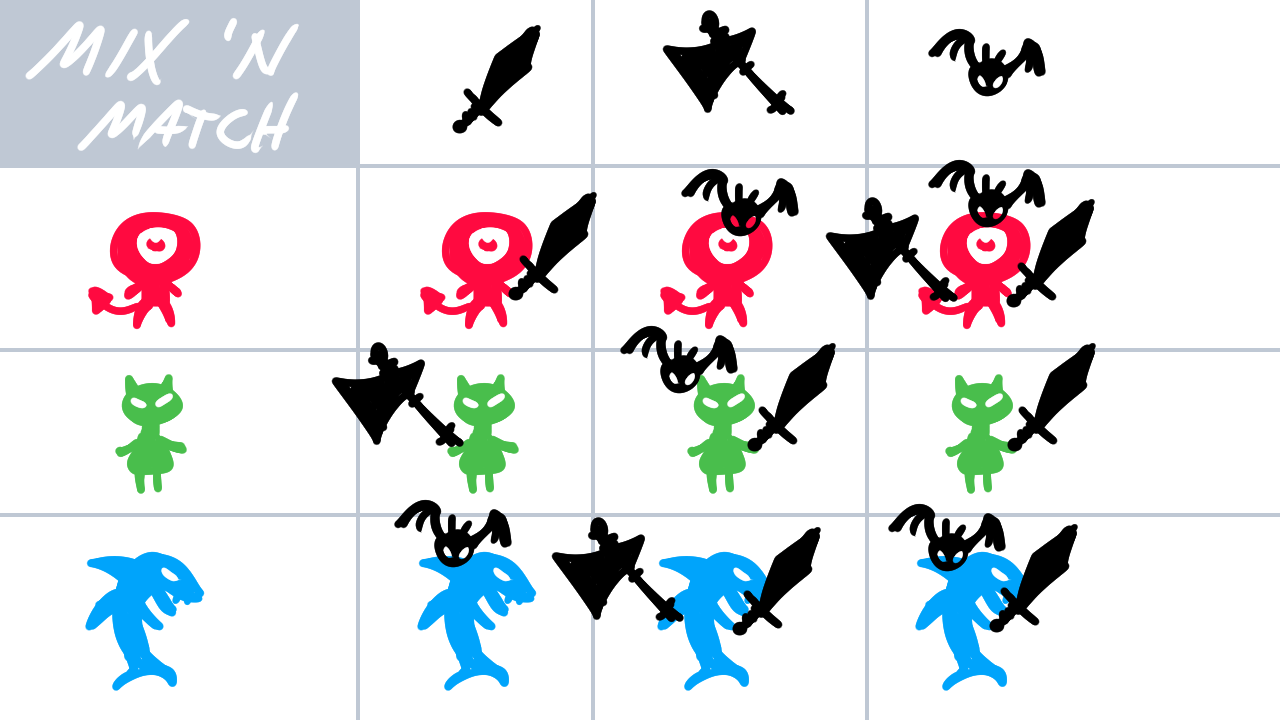
🔥 Have a solid concept & desire to execute
Look, you’re just gonna have to have that burning desire to climb this rock.
You know this.
Dedicated mountain climbers who perform amazing feats love the mountain. They crave the mountain. They live for the climb. You’ve gotta find that desire. You know it’s there (somewhere).
Some problems need to be solved early on. If you’ve done your legwork by designing a fantastic concept that you love, you’ll have an easier time climbing the mountain. If your concept is merely “fine” to you, or you think it’s ehh, alright, has some potential, those kinds of feelings – content mountain could easily overwhelm you.
Plant the best seed that you can and grant yourself confidence by doing the work and proving the concept. If it really is a bullseye for you, you’ll find yourself climbing that mountain without thinking too much about how far you’ve come ... and how much left there is to climb.
Find the right project and you’ll just climb. Content mountain can’t defeat you!
🛠 Making Big Indie Games: Bigger & Better
Climbing content mountain is a brand new section in my advanced tutorial package Making Big Indie Games. If you enjoyed this article then you might dig this ... course? Should I call it a course?
MBIG (as I call it) first launched in August 2022, and I've updated it with a brand new section: Bigger & Better. It includes:
- What Big Game should you make?
- Big game techniques
- Climbing content mountain (this free article with an accompanying video)
- References spelunking (going through the references individually)
The tutorial package includes a dense, 63-page ebook, but the real meat of the package are the 17 videos totaling almost 2 hours of my best game dev advice.
Of course, the vast majority of the articles I write and videos I produce are free, so buying my book or this course helps me keep doing that. Thanks for your support!
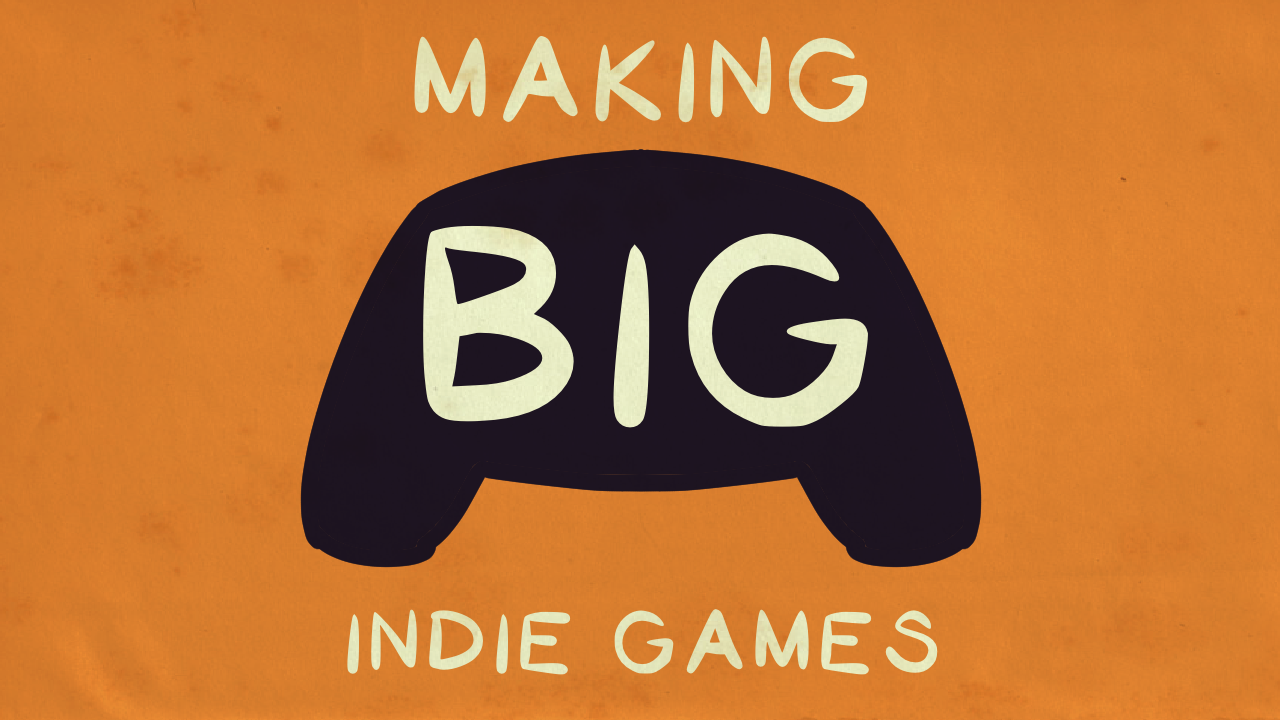
MBIG is now bigger, better, and more affordable than ever! Get it on Itch or Gumroad.
See the launch trailer or the All about Making Big Indie Games video.
❤️ A note to my early supporters
Thank you! You are the reason I was able to fund my early video development and still have an active presence on YouTube. I hope the package has been helpful in your game development & I'm looking forward to your big games. 🎮📈


